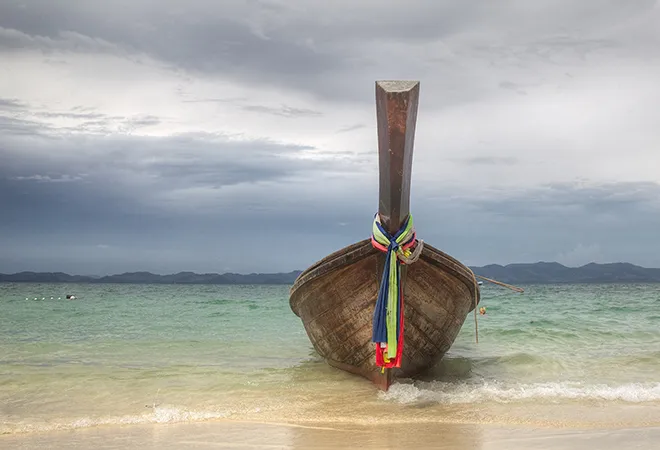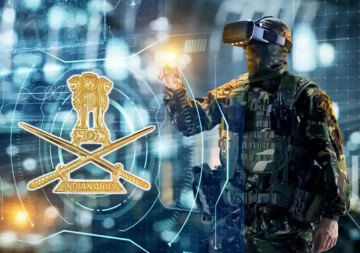
In recent years, India’s continental approach has been replaced with a precedence to maritime matters essentially due to two reasons. The first is its ambition to emerge as a predominant power in the Indian Ocean Region and second is its apprehensions about China’s assertive rise in these waters. To address both, India has sought to enhance its ties with regional powers, particularly the Association of Southeast Asian Nations (ASEAN), the members of which form India’s eastern neighbourhood. Consequently, the Bay of Bengal and adjoining Andaman Sea, as the common maritime space between India and Southeast Asia, has emerged as a geographic ‘Gateway’ to forge stronger linkages.
Rudiments of a ‘Gateway’
Eminent geopolitician, Saul Bernard Cohen, described ‘Gateways’ as regions “which serve as bridges between realms, regions or states.” Although further details are unavailable on this geopolitical concept, the fact that it serves as a ‘bridge’ between two regions suggests that collaboration, cooperation and connectivity are its chief characteristics. Security cooperation is thus intrinsic to a ‘Gateway’ to ensure the safety of stakeholders as well as their efforts at collaboration. Therefore, to understand the potential of the Bay of Bengal and Andaman Sea as not only a geographic but also a strategic ‘Gateway’ between India and Southeast Asia, the prospects of security cooperation in this arena needs to be analysed.
Chinese caution and freedom of navigation
Amongst the security concerns that characterise these waters, predominant is the uncertainty about China’s assertive rise. Beijing’s ‘global developmental strategies’ such as the Belt and Road Initiative and the Maritime Silk Route actually stem from its need to meet increasing fuel requirements. Accordingly, China is expanding its influence in the region by enhancing maritime ties and sponsoring infrastructural developments in the littoral states. However, countries are apprehensive of falling prey to China’s debt trap diplomacy and are also wary of controversial interpretations of international maritime law. India particularly perceives China’s intention to be to create a Beijing controlled, elongated Sea Lane of Communication (SLOC) to aid the country in shaping the security dynamics of the region. Naturally, apprehensions prevail about the freedom of navigation in this maritime space.
However despite the magnitude of this concern, it was only in 2012, in the Vision statement of the India-ASEAN Commemorative Summit, that the need to “ensure maritime security and freedom of navigation…” was articulated significantly for the first time. Even then, no ASEAN-India meetings or exercises specifically directed towards this agenda followed. It was only six years later in 2018 that Prime Minister Modi, while addressing the ASEAN-India Commemorative Summit, laid emphasis on ‘Freedom of Navigation’ once again as a key element of the Indo-ASEAN maritime partnership and the leaders agreed on establishing a joint mechanism to ensure freedom of navigation. Since then, New Delhi’s Indo-Pacific Oceans’ Initiative of 2019 and the ASEAN-India Plan of Action 2021-2025 have encouraged freedom of navigation. It may, thus, be observed that India and ASEAN collaboration is as yet nascent in the domain of conventional security concerns. Although the Indian Navy has been carrying out joint exercises with the navies of Southeast Asia on a bilateral basis, a collaborative exercise such as the one between the US Navy and ASEAN as an entire bloc in September 2019 is yet to be undertaken. ASEAN carried out similar drills with China in 2018.
The limited initiatives in deepening such security cooperation may be attributed to two reasons. The first is the fear of earning Chinese displeasure — China is wary of New Delhi's growing closeness to ASEAN and perceives this as a strategy to counter balance a rising China. Indeed, in a scenario in which China accounts for nearly 14 per cent of India’s imports and ASEAN is its largest trading partner, moves which may be perceived as anti-China will be refrained from. Consequently, neither India nor the ASEAN proclaim of any anti-China stance in their visions of the Indo-Pacific. It is due to this wariness that neither India nor the ASEAN countries have ever been very vocal in criticising Chinese activities or engaged in serious military collaboration in this region. Secondly, India and ASEAN suffer from a sense of disillusionment on both sides about the present state of the relationship. While India’s capacity to offer security guarantees remains limited compared to ASEAN’s other dialogue partners, ASEAN’s inclination to harness India’s offerings for regional stability also remains ‘circumscribed’ by its sensitivities to other powers.
Partnership in alternate security
Nonetheless, their need for collaborative security in the region, the desire for mutual strategic convergence given the ASEAN centrality in the Indo-Pacific vision of both parties, and the expectation of several regional countries for India to have a more prominent security posture in the region cannot be overemphasised. Accordingly, attention turns to the more non-traditional security concerns in the Bay, which offer significant scope for collective action and yet does not seem to be directed against any country in particular. Amongst the plethora of such issues which exists in the Bay, the spectre of natural disasters looms large.
Apart from the cyclones, which are frequent in the Bay, tsunamis also occur intermittently and wreak havoc on human life, as had been witnessed in 2004. In contrast to India-ASEAN collaboration in matters of traditional security, in the purview of disaster management, India and ASEAN have cooperated more substantially. India regularly participates in the ASEAN Regional Forum Disaster Relief Exercise and also engages in consultations with the ASEAN Committee on Disaster Management to facilitate synergy in cooperation mechanisms. India also aspires to have close cooperation with the ASEAN Coordinating Centre for Humanitarian Assistance on Disaster Management. On the other hand, ASEAN seeks deeper collaboration with India as it is an internationally recognised provider of disaster aid and has offered Humanitarian Assistance and Disaster Relief to Southeast Asian countries on several occasions. Given the humanitarian nature of the concern, strengthening cooperation in this arena has not been interfered with by third parties, leaving an unimpeded path for further engagement.
Another humanitarian security domain which bears immense potential for India-ASEAN engagement is the present COVID crisis. India has already expressed its willingness to collaborate with ASEAN to produce generic drugs and medical technologies used for the treatment of COVID-19 patients. It is likely that such cooperation will be favoured by major power groupings such as the Quad Plus (which has already held discussions in this purview) and will also benefit from the Blue Dot Network — jointly launched by the US, Australia and Japan to promote “high quality, trusted standards for global infrastructure development.” On the contrary, it is unlikely that collaboration in more traditional security issues will attract much constructive support from major powers groupings.
Thus, the opportunity for developing security partnerships between India and ASEAN is presently much more viable in the domain of humanitarian security concerns rather than in addressing conventional challenges. But if India-ASEAN ties are deepened through such collaborations, it will serve as a mechanism for confidence building, which in turn will facilitate joint action in conventional concerns. Improved cooperation in humanitarian concerns is therefore necessary for the maritime theatre of the Bay of Bengal and the Andaman Sea to emerge as a strategic ‘Gateway’ between India and Southeast Asia.
The views expressed above belong to the author(s). ORF research and analyses now available on Telegram! Click here to access our curated content — blogs, longforms and interviews.




 PREV
PREV


